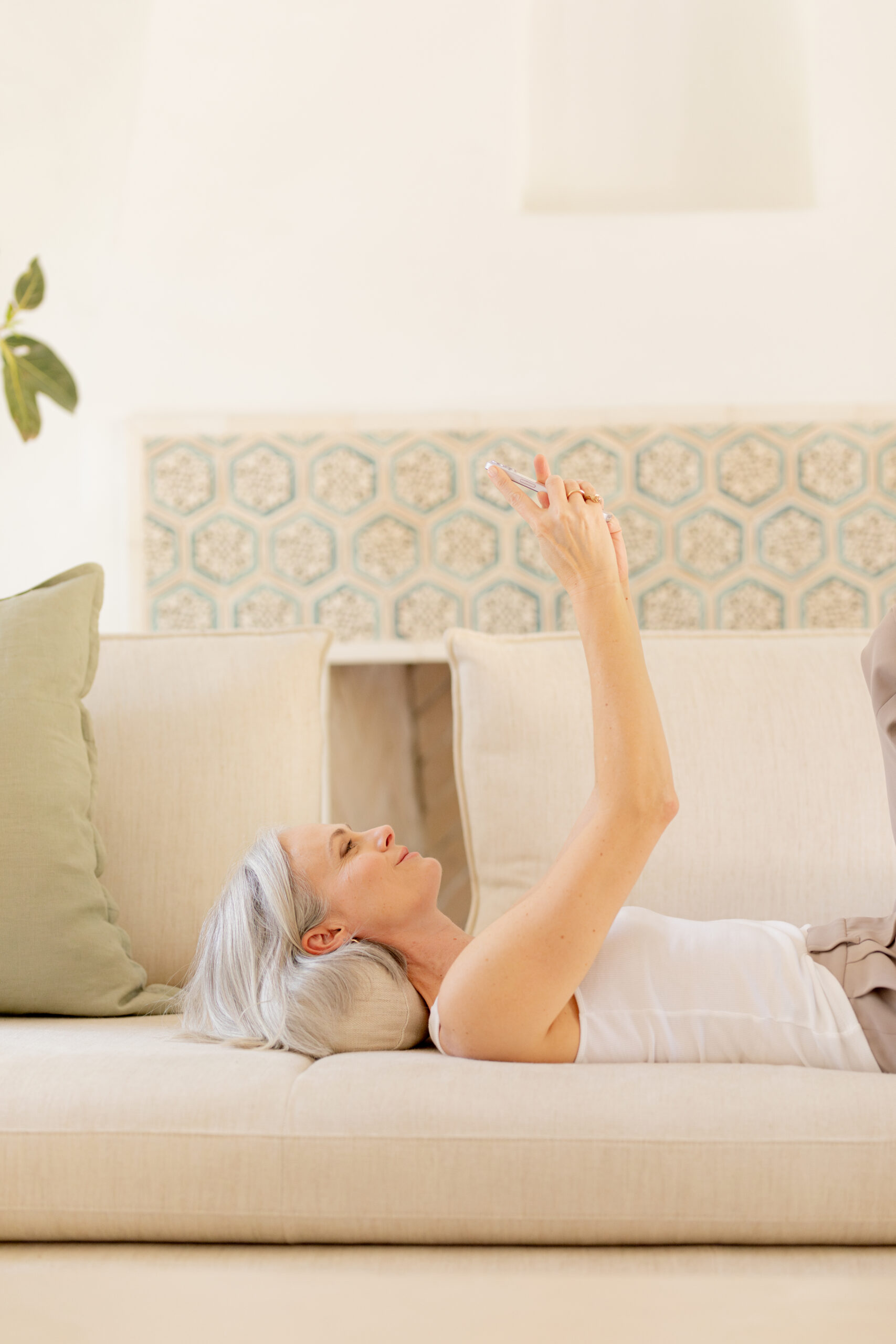
A Functional Medicine Doctor Shares Her Favorite Wellness Trends, Backed By Science
Wellness is trending — and as a functional medicine doctor in Los Angeles, I’m always hearing about what’s new and noteworthy in the world of health. But, just because everyone is talking about something (or running ads for it on their podcast) doesn’t mean it will actually support your specific goals.
“Just because everyone is talking about something … doesn’t mean it will actually support your specific goals.”
With so many trends cycling through wellness culture, it can be hard to separate what’s helpful from what’s hype. The best wellness practices, in my experience, are the ones that support the body in sustainable and evidence-based ways.
Here are some of the recent wellness trends I’m excited to see gaining popularity — many of which I use myself, recommend to my patient, and see as part of a bigger shift toward more individualized, whole-person care.
Metabolic health and blood sugar awareness
More people are beginning to understand that metabolic health isn’t just about weight or blood sugar levels — it’s foundational to nearly every system in the body. Stable blood sugar impacts mood, energy, hormonal balance, inflammation, and even sleep. We’re seeing a rise in practices like post-meal walks, fiber-forward meals, and glucose monitoring not just for diabetes, but for everyday health optimization.
“More people are beginning to understand that metabolic health isn’t just about weight or blood sugar levels — it’s foundational to nearly every system in the body.”
Personally, I love tools that help patients connect the dots between how they feel and what’s happening in their bodies. Sometimes that’s a CGM (continuous glucose monitor), but more often, it’s as simple as learning how to eat in a way that prioritizes blood sugar balance: Fiber, protein, healthy fats first. And yes — there’s real science behind that 10-minute post-meal walk. It can reduce glucose spikes and improve insulin sensitivity over time.
Women’s health and hormonal support
We’re finally having more open conversations about menopause, fertility, and the hormonal shifts that define so much of our lives. There’s a growing hunger for solutions that go beyond “just deal with it,” and I’m here for it. From hormone testing and cycle tracking to bioidentical hormone therapy and herbal support, we now have more tools than ever to help women understand their bodies.
“There’s a growing hunger for solutions that go beyond ‘just deal with it,’ and I’m here for it.”
As someone who’s navigated fertility challenges personally, this trend hits home. Functional medicine offers a way to see the whole picture — gut health, detox pathways, micronutrient status, stress response — all of which play a role in hormone balance. And importantly, it offers support that changes with you, whether you’re trying to conceive or moving through menopause.
Infrared and thermal therapies
Infrared saunas, red light therapy, and heat exposure aren’t new, but they’re having a major moment — and for good reason. These therapies fall under the broader category of photobiomodulation, a process where light influences cellular function. They can support detoxification, reduce muscle tension, improve circulation, and even help regulate the nervous system.
“These therapies fall under the broader category of photobiomodulation, a process where light influences cellular function.”
In my practice, I love recommending infrared sauna use as part of an integrative care plan for many patients. I also use it personally to unwind and reset after long days. The key is consistency: When used regularly, photobiomodulation can enhance mitochondrial function and lower stress markers. The science is catching up to what many people intuitively feel after a good sweat — clearer mind, lighter body, better sleep.
Mindfulness and nervous system regulation
One of the most empowering shifts I’ve seen in recent years is the growing awareness of nervous system health. From breathwork and somatic therapy to grounding exercises and vagus nerve stimulation, people are learning that nervous system regulation isn’t something you do once — it’s something you practice daily for better resilience in responding to stress, processing emotions, and experiencing the world. If you’ve been hearing more about the importance of regulating it, there’s good reason — it’s foundational to your health.
“One of the most empowering shifts I’ve seen in recent years is the growing awareness of nervous system health.”
In my own life, I rely on simple rituals: Stepping outside barefoot, intentional breathwork, and noticing when my body is in “go” mode versus when it needs to slow down. I love utilizing apps like Headspace and Calm to guide mindfulness and presence as well as Nikki Nie’s Wavelength Wellness membership for mindful movement. I also encourage my patients to tune in to how their body responds to stress, so we can build a personalized toolkit that supports regulation from the inside out.
Sleep hygiene
From personalized sleep tracking apps to functional medicine testing for cortisol and melatonin rhythms, there’s more awareness now about what quality sleep actually looks like. Even better, there are tons of companies creating products to help us get it.
“Small changes in sleep hygiene can lead to massive improvements in energy, mood, and hormone function.”
Some of my go-to sleep products include soothing, sleep-friendly red light bulbs and nightlights that signal your brain it’s time to wind down. Cooling sheets and the Eight Sleep temperature-controlled bed — because cooler sleep helps you fall asleep faster, stay asleep longer, and get deeper rest. I also love using mouth tape to encourage nasal breathing and better oxygenation.
These tools, along with many more, help create the kind of sleep environment that supports deep, restorative rest. Small changes in sleep hygiene can lead to massive improvements in energy, mood, and hormone function.
Personalized health tech
Wearables have come a long way. We’re now able to track heart rate variability, oxygen saturation, skin temperature, sleep cycles, and so much more, all from our wrists, fingers, and even arms. And when used wisely, this kind of tech can offer real insight into your body’s rhythms and help guide more personalized, data-informed care.
“When used wisely, this kind of tech can offer real insight into your body’s rhythms and help guide more personalized, data-informed care.”
But it’s not always clear how to use all that data. When it helps you make supportive choices — like adjusting your sleep routine or honoring recovery — that’s great. But if it’s just another thing making you feel anxious or inadequate? That’s not wellness. Just because we can track everything doesn’t mean we should stay plugged in 24/7.
Personally, I’m a fan of both tuning in and unplugging. Companies like Oura offer airplane mode so you’re not constantly connected. You can sync the data weekly (or whenever feels right) and spend the rest of the time simply being in your body, not just reacting to numbers.
Digital detox and disconnecting from technology
We are more connected than ever, and… more overwhelmed than ever. Our nervous systems weren’t designed to be in constant input mode or to swipe through our news a mile a minute (guilty).
“I’m seeing more patients crave stillness, spaciousness, and simplicity.”
I’m seeing more patients crave stillness, spaciousness, and simplicity. Practices like journaling, walks without a phone, grounding walks by the ocean or in nature, creative hobbies, and screen-free weekends are making a big comeback, and for good reason.
I’ve been practicing digital boundaries more intentionally this year, and the impact is real: More clarity, less reactivity. One study from the University of Pennsylvania found that reducing social media use to 30 minutes a day significantly improved well-being, lowering both anxiety and depression scores in just three weeks.
Community-centric health hubs
Healing doesn’t happen in isolation. One of the most inspiring trends I’ve seen is the rise of wellness spaces that center connection — whether that’s group classes, peer support circles, or integrated care hubs that bring different modalities under one roof.
“Healing doesn’t happen in isolation.”
At Love.Life, this is core to how we do things. Patients don’t just see a doctor for 15 minutes and head out the door because they can’t get out of there fast enough. Instead, they get access to a full health club where they can grab a smoothie at the café, take a cold plunge, or join a fitness class, all while being supported by a full team of experts that include their physician, dietitians, trainers, mental health providers, acupuncturists and more. Community is medicine and people need more than just the bare minimum. And we’re finally treating it that way.
The bottom line
Trends will come and go, but the best wellness practices are the ones that bring us back to ourselves — and to the core foundations of health.
“Trends will come and go, but the best wellness practices are the ones that bring us back to ourselves.”
Wellness isn’t about doing it all. That’s a fast track to burnout. When I work with patients, we focus on what actually supports their vision for health and how they want to feel in their everyday life.
So let this be your reminder: It’s not about what your favorite influencer is doing. It’s about what’s true for you. That’s the trend I hope never goes out of style.
Dr. Jaclyn Tolentino is a Board-Certified Family Physician and the Lead Functional Medicine Physician at Love.Life. Specializing in women’s health and hormone optimization, she has been featured in Vogue, The Wall Street Journal, and Women’s Health. As a functional practitioner and a breast cancer survivor, Dr. Tolentino is dedicated to uncovering the root causes of health challenges, employing a holistic, whole-person approach to empower lasting wellbeing. Follow her on Instagram here for more insights.





